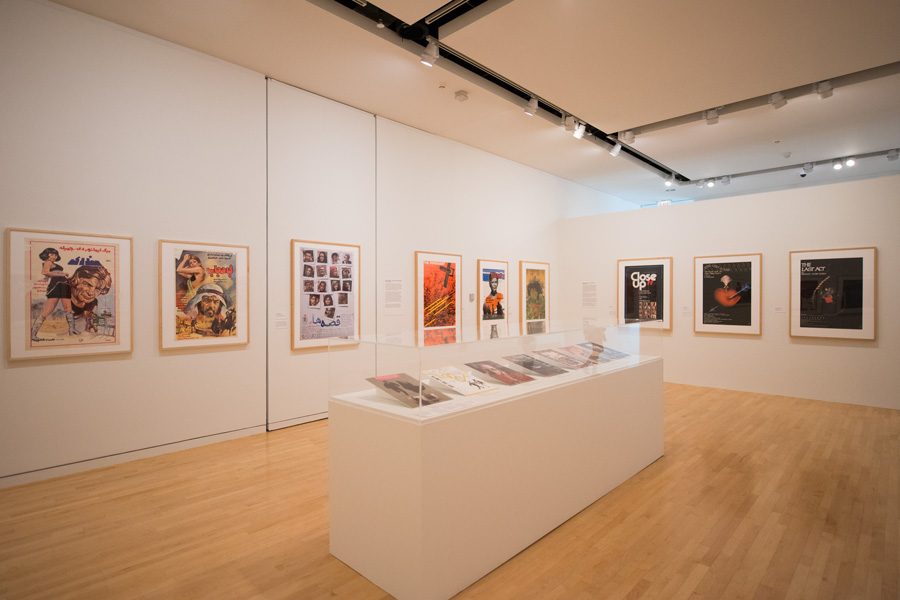Block Museum exhibit, film series look at Iranian history
Leah Dunlevy/The Daily Northwestern
The “Salaam Cinema!” exhibit and Iranian Cinephilia series at the Mary and Leigh Block Cinema of Art, featuring around 300 Iranian movie posters and over 10 films, open Thursday.
October 6, 2016
A&E
While people may typically collect keychains or stamps, Communication Prof. Hamid Naficy has his own collection: he is the proud owner of almost 300 Iranian movie posters.
Most of Naficy’s posters will be on display at the Mary and Leigh Block Cinema of Art as part of the “Salaam Cinema!” exhibit and Iranian Cinephilia series, which premieres Thursday and aims to humanize Iranian history and culture through film.
“I think [film] is an important window to the society and culture, especially in the last 30 to 40 years when there hasn’t only been a diplomatic relationship between Iran and the U.S., but also an antagonistic relationship,” Naficy said. “Both sides’ propaganda is against each other and produces negative news. It is good to have access to what Iranians are making.”
Naficy, who has devoted 38 years to researching Iranian cinema, said he wants to share his findings with the Northwestern community to help people better understand life within the Middle Eastern country.
His ideas fit well with Block Museum’s mission to represent art across time, culture and media, said Michelle Puetz, the museum’s curator of media arts.
“We want to focus and highlight global perspectives, so it seemed very timely in this moment to think about Iran,” Puetz said.
The posters are organized in order to take the viewer through a timeline of Iranian cinema as it relates to political discourse in the country, Naficy said.
The film genres begin with pre-revolution “filmfarsi,” a vibrant and celebratory category partially characterized by the sexualization of women, and ending with the approach of the Iranian revolution, when new wave and art house cinema appear and introduce a more somber tone.
Naficy added post-revolutionary films also depict a new culture of censorship.
“A bra cup has been drawn by magic marker on the poster, or here you see a skirt drawn on the woman,” he said. “This is also what happened to the film themselves. If they couldn’t cover the offending parts, they just cut the section.”
Puetz emphasized the intentional pairing of the movie posters and films. The Block Cinema’s goal is to strengthen the connection between the two media to further emphasize the importance of Iranian history, she said.
“People think of film posters as propaganda or as advertising material, and they do serve that function,” Puetz said. “For artists who are making these posters, they have to really think about how to condense the ideas that unfold in a two hour narrative film in one single visual representation.”
Mehrnaz Saeed-Vafa, a cinema art professor at Columbia College Chicago and a guest lecturer in the film series, said Iranian cinema has been especially important in the last three decades because it is as much an entertainment medium as it is a teaching one.
The exhibit and film series should leave the audience the lasting impression of the attention Iranian filmmakers give to the art of filmmaking and production, Naficy said. He added the art house genre put Iran on “the map of world cinema” and presents the nation in a way that is not typically portrayed by the U.S.
“If you even think about the last presidential debate, Iran is really demonized or presented as the enemy, and this is a way to open up conversations about the history of Iran and film culture,” Puetz said.
Email: hayleykrolik2020@u.northwestern.edu
Twitter: @hayleyondadaily



